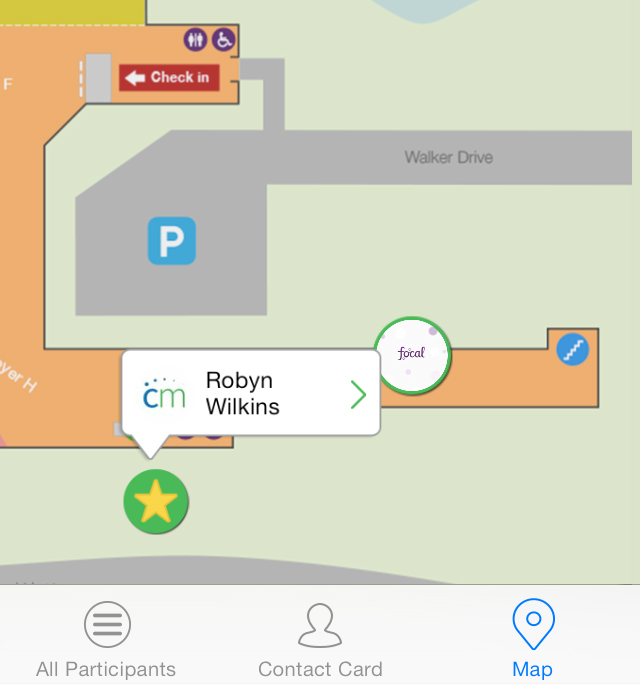ConnectionMaker – Indoor Location System
Nexus

Bluetooth Low Energy proximity and location was one of our early areas of research at the IoT Design Shop. We did a number of experiments with signal strength, filtering, and estimation of distance based on tuned Bluetooth LE beacons that we developed in house. Although we determined that Bluetooth signals were far from perfect, we did find that they were often “good enough” to do some really interesting things, such as being able to loosely locate a smartphone in the field of a grid of bluetooth beacons.
Once we achieved reasonable accuracy, we brainstormed ideas where we might try to apply these techniques to a commercial problem, and the notion of ConnectionMaker was born.
Our idea was to utilize a sparse grid of BLE Beacons to create temporary “pop up” indoor location systems for conferences and other events that take place in large convention centres, arenas, and campuses. This way, if there were colleagues or peers you wanted to try to connect with at the conference, there would be a way to locate them on the floor of the event.
Beacon Towers

The key to the ConnectionMaker system was being able to deploy a field of Bluetooth Low Energy (BLE) beacons at intervals of approximately 15-20m. To enable this to be a relatively simple task for rapid set up at events, we designed and built out a simple “tower” design that was based on 3D printed parts that housed our beacon solution.
Based on provided maps and venue layouts, we could normally estimate where to place about 75% of our beacons before arriving on a site. Following that, we would fine tune and add beacons where there might be problematic areas that needed higher resolution. However, in general, ConnectionMaker was not overly challenging to deploy.
Secret Sauce

Once deployed, and calibrated, our algorithms would get to work. Most of the logic was done on the smartphone itself as it is the “receiver” of all of the active Bluetooth LE signals in a ConnectionMaker equipped venue. Using a proprietary combination of heuristics, filtering, and a unique weighting algorithm, we would make a real-time approximation of the device location in the BLE fields emitted by our towers. Then, a secondary weighting algorithm would assess probability and adjust the device position so that impossible movements or jitter due to interference was minimized.
Finally, we had a basic cloud back end that would receive position information from our devices, providing the social functionality of being able to flag and track other attendees of interest on the venue map.
Deployments
During our R&D phase, we were very fortunate to take ConnectionMaker on the road into a number of venues ranging from conference centres to arenas. Each time, we learned a ton about the system, and Bluetooth Low Energy propagation. Indoor Location Systems are definitely a tricky problem to solve, but we were fortunate to get an opportunity to deploy and resolve these problems in various scenarios.
Future Work
We have continued our work in Bluetooth Low Energy proximity systems over the years and continue to have a deep interest in the area. ConnectionMaker contributed to a number of projects we’ve done for clients over the years, and we continue to be excited whenever a BLE proximity project is on the table!

